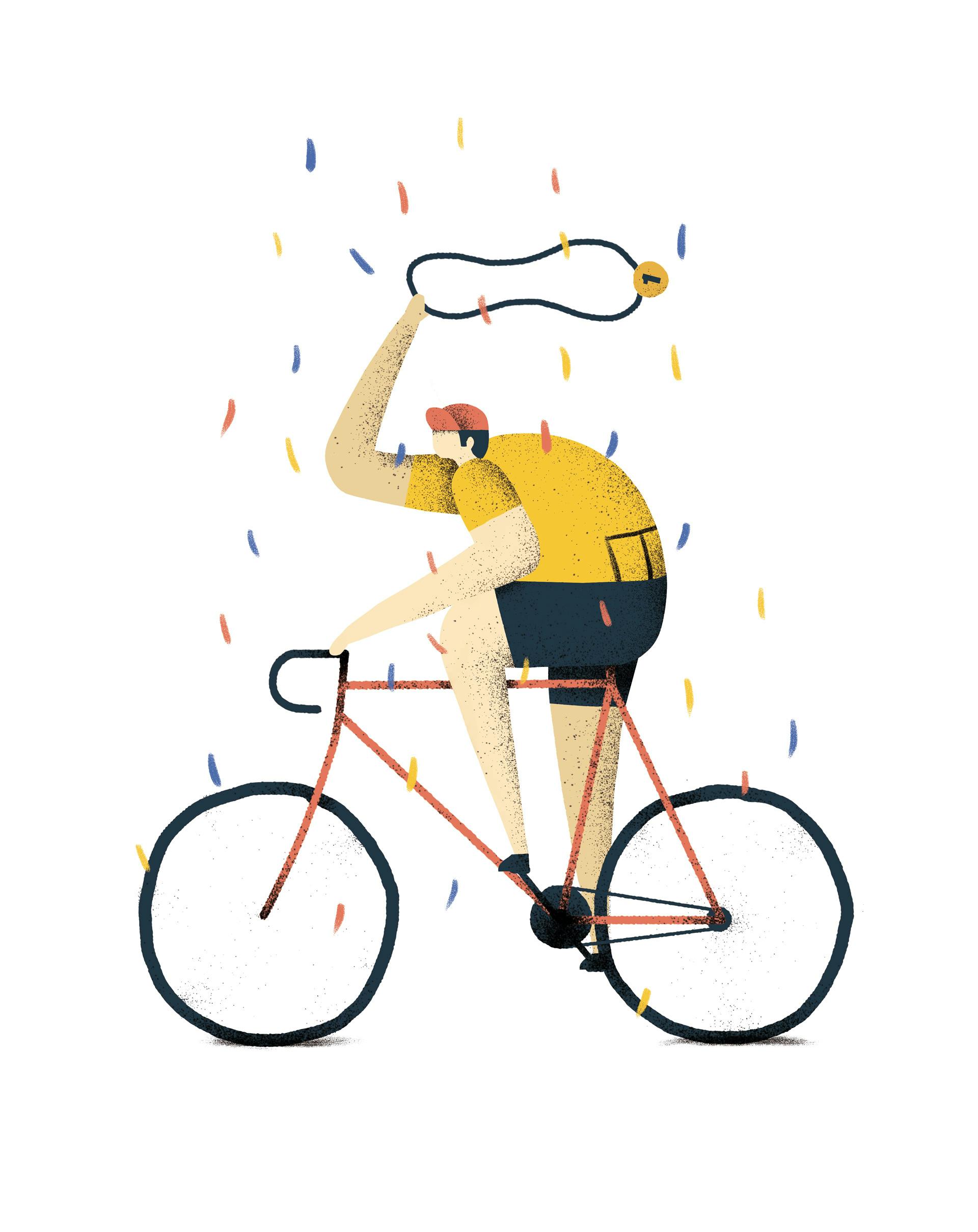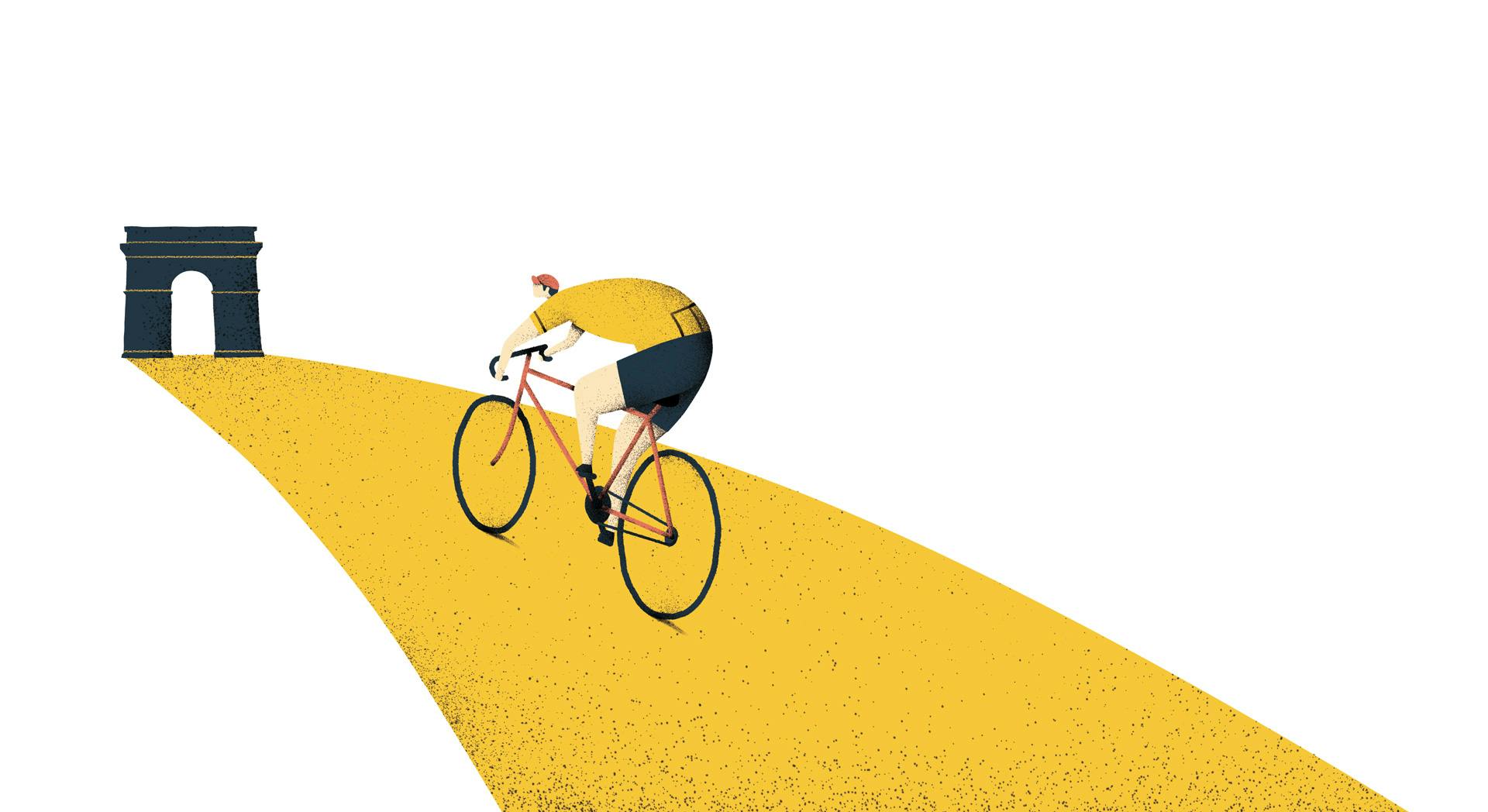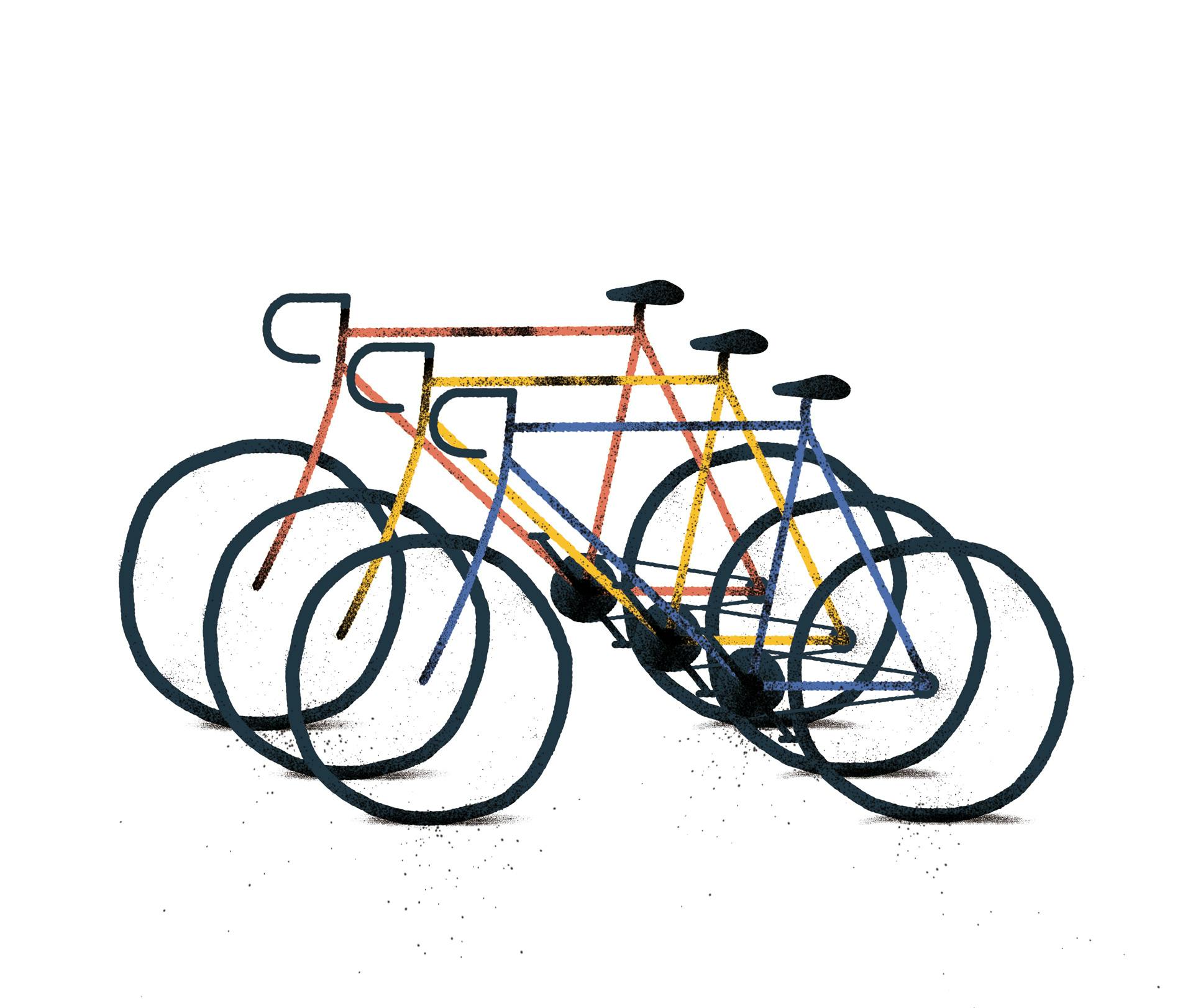The Summit of The Tour
Paris is the ultimate end goal for cyclists starting the Tour de France. Since 1903, the Parc des Princes, the Vélodrome de la Cipale, and the Champ-Élysées have time after time been the place of extraordinary emotional moments for the Tour and its participants. Over the decades the French capital has continued to maintain its place as the crowning glory of the greatest legends of cycling.

Text: Pierre Labardant
Translation: Kaitlyn Bové
Illustration: Stéfano Obregón
Riding Among the Princes
The history of the Parc des Princes is intimately linked to the Tour de France. The velodrome was inaugurated in July 1897, led by Henri Desgrange, the famous Henri Desgrange, director of the daily sports journal L’Auto which created the most famous cycling event in the world in 1903, the Tour de France. Situated in the beautiful Parisian neighborhoods, the Parc des Princes accompanied the craze stirred by cycling with the French at the beginning of the 20th century. From 1900, it would go on to host the world championships of track cycling, and thereby naturally imposed itself as the arrival site of the newly created Tour de France. Every year until 1967, the date of the destruction of the cycling track, the Parc saw the group of survivors of “la Grande Boucle” parading in front of the crowd upon their arrival. And the last winner of this prestigious stage, as a symbol, was the Frenchman Raymond Poulidor, on July 23, 1967, after a 46-kilometer time trial.

Rolling in the Woods
Between 1968-1974 the Tour de France ended at the Vélodrome de la Cipale in the Bois de Vincennes in the east of Paris. The Vélodrome de la Cipale, whose name comes from a contraction of the term “municipal” in French, is a site that has been dedicated to cycling since the Olympic Games organized in 1900 and 1924. The municipal velodrome hosted seven consecutive arrivals of the race. It saw Belgian Eddy Merckx win four times on the concrete of the Paris track, applauded by a crowd gathered in metal stands designed by Gustave Eiffel that are still intact today. Despite this supremacy of this Belgian “Cannibal”, it is nevertheless the Pélissier brothers, famous “Forçats de la route”, and the name of Jacques Anquetil that appear on the facade of the velodrome, which is now classified as an historic monument.
On the Most Beautiful Avenue in the World The reputation of the Tour de France reached new heights in 1975 when the most beautiful avenue in the world, the Champs-Élysées, was inaugurated as the finish line of the race. The Champs-Elysées is a beautiful display of famous Parisian infrastructure, as it connects to Place de l’Étoile, where the Arc de Triomphe stands, to Place de la Concorde, brimming with l’Obélisque de Luxor. The paved avenue highlights the three weeks of racing and ceremoniously rewards the riders of their accomplishment. If we were to sum up this stage of the race into a sentiment between masters of the discipline, such as Marc Cavendish (winner of four consecutive sprints on the fields in 2009, 2010, 2011 and 2012), Marcel Kittel (2013 and 2014) or André Greipel (2015 and 2016), then we could say that this stage of the race has seen a lot of emotions, to say the least. In 1979, faithful to his “Badger” character Bernard Hinault escaped the vigilance of the peloton in the company of Joop Zoetemelk, to win a victory of character. In 1989, the French Laurent Fignon reached fifty seconds ahead of the standings at the start of this phase, which gave hope for a victory for the Frenchman.

However, he lost eight seconds on the arrival of the final time trial and saw American Greg LeMond to take the yellow jersey after 3,285 kilometers of racing. A devastating moment for Fignon. Yet, each edition is an opportunity for the world to (re)discover Paris in the city’s most beautiful monuments. In 2003, deviating from its usual loop, the peloton went around the striking Arc de Triomphe to celebrate the 100 years of the Great Loop. And in 2017, to signify Paris’ strength in candidacy to host the 2024 Olympic Games, the 167 participants crossed the Grand Nave of the Grand Palais, no doubt raising their eyes to admire the glass roof overlooking this magnificent building built to the glory of the French art on the occasion of the l’Exposition Universelle of 1900.
Women Getting Involved
Over the course of several years a women’s Tour traveled the roads of France, and like the men’s course, it finished on the Champs-Élysées. It was during this time that the French Jeannie Longo declared her superiority in the field, garnering three consecutive victories in 1987, 1988 and 1989. Today, as its gone, this race stage has given way to a one-day race, La Course by Le Tour , or The Race by The Tour. Between 2014, the date of its creation, and 2016, it was organized as a curtain raiser of the last stage of the Men’s Tour and took advantage of the extraordinary media exposure taking place on the ChampsÉlysées, haloed with cycling glory. As part of the UCI World Tour calendar, the success of La Course by Le Tour could foreshadow the return of a Women’s Tour encouraged by the investment of important brands, a renewed interest in the media, and the emergence of new talents.

Starting Point for Cycling Adventures
As Paris is an end goal for participants in the Tour de France, the French capital has also been the starting point of renowned events since the emergence of cycling as a competitive sport at the dawn of the twentieth century. On Sunday, November 7, 1869, a hundred enthusiastic cyclists started from the Place de l’Étoile in order to participate in the first edition of Paris-Rouen, a race created by the magazine Le Vélocipède Illustré. The Paris-Rouen race is considered to be the first cycling endurance race from city to city. Then on September 6, 1891, to respond to the creation of a 600-kilometer long Bordeaux- Paris cycling, Le Petit Journal organized the first Paris-Brest-Paris and launched 206 pioneers on a course totaling 1,200 kilometers. On April 19, 1896, 51 riders took the start of the first edition of Paris-Roubaix, the future “Reine des Classiques”, supported by the daily sports journal Le Vélo . While on May 17 of the same year, the race Paris- Tours, supported by the publication Paris-Vélo, took shape. All these events have forged the legend and confirmed the honorable status of the capital of France: Paris is the center of the cycling world.